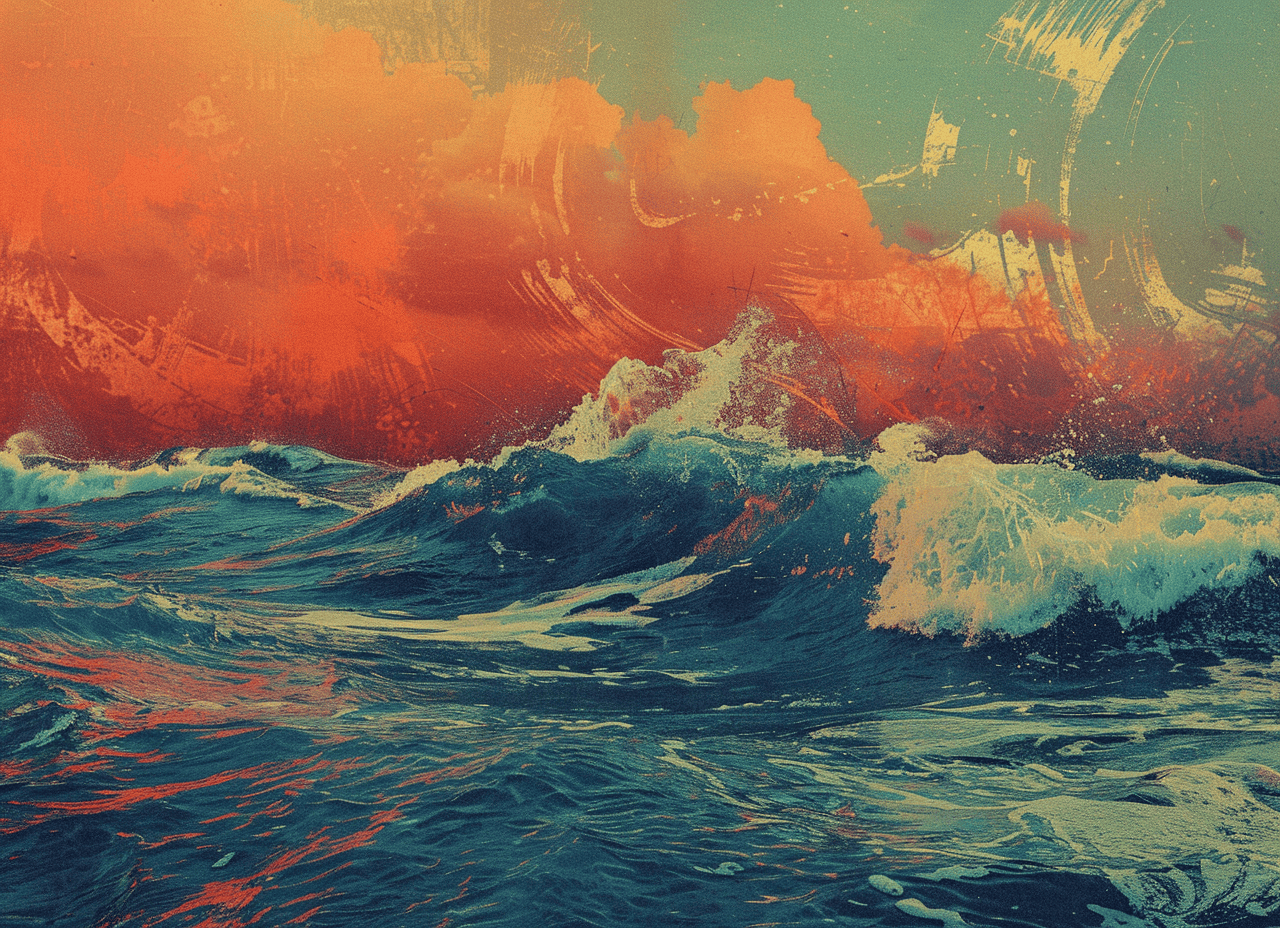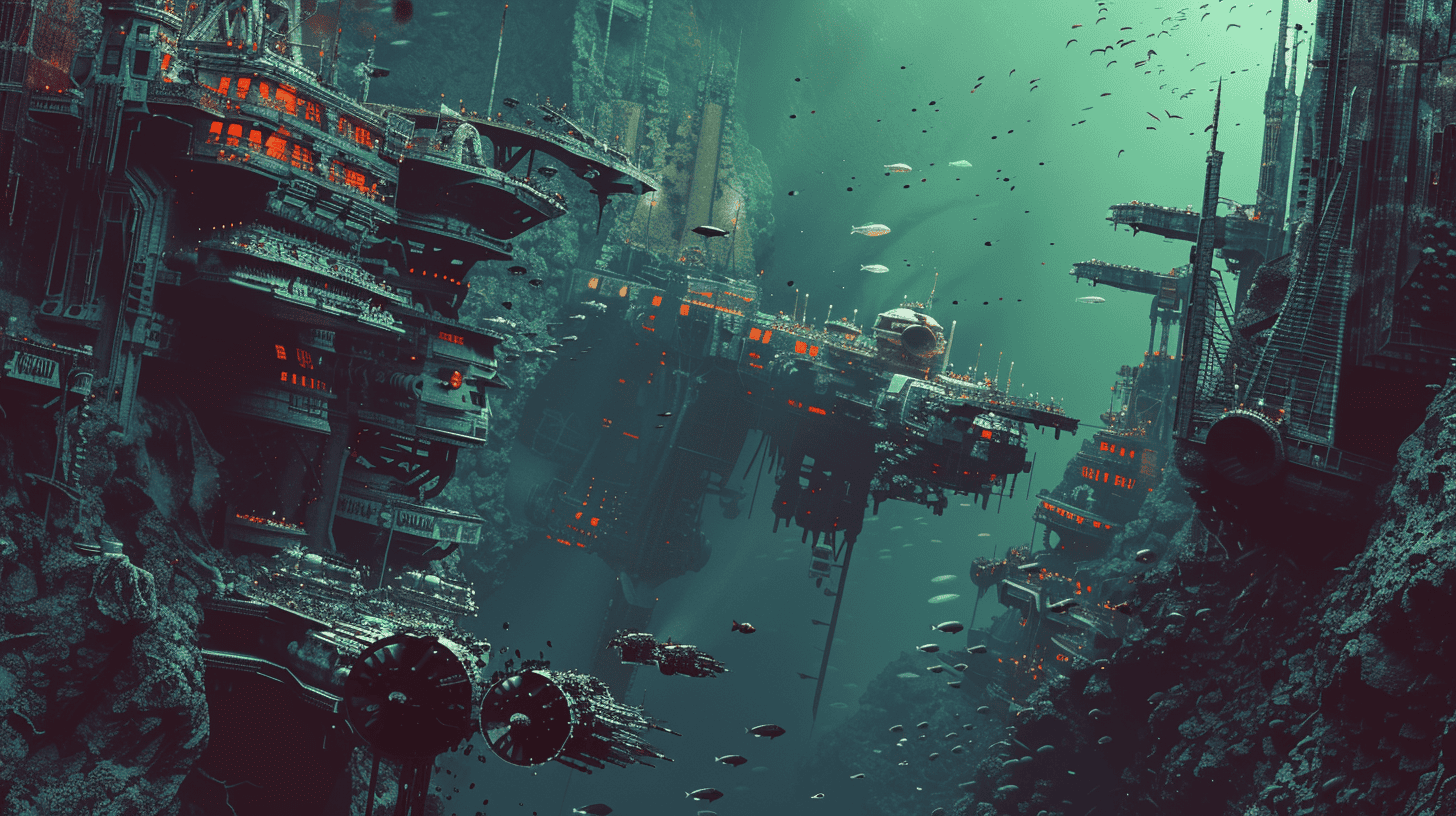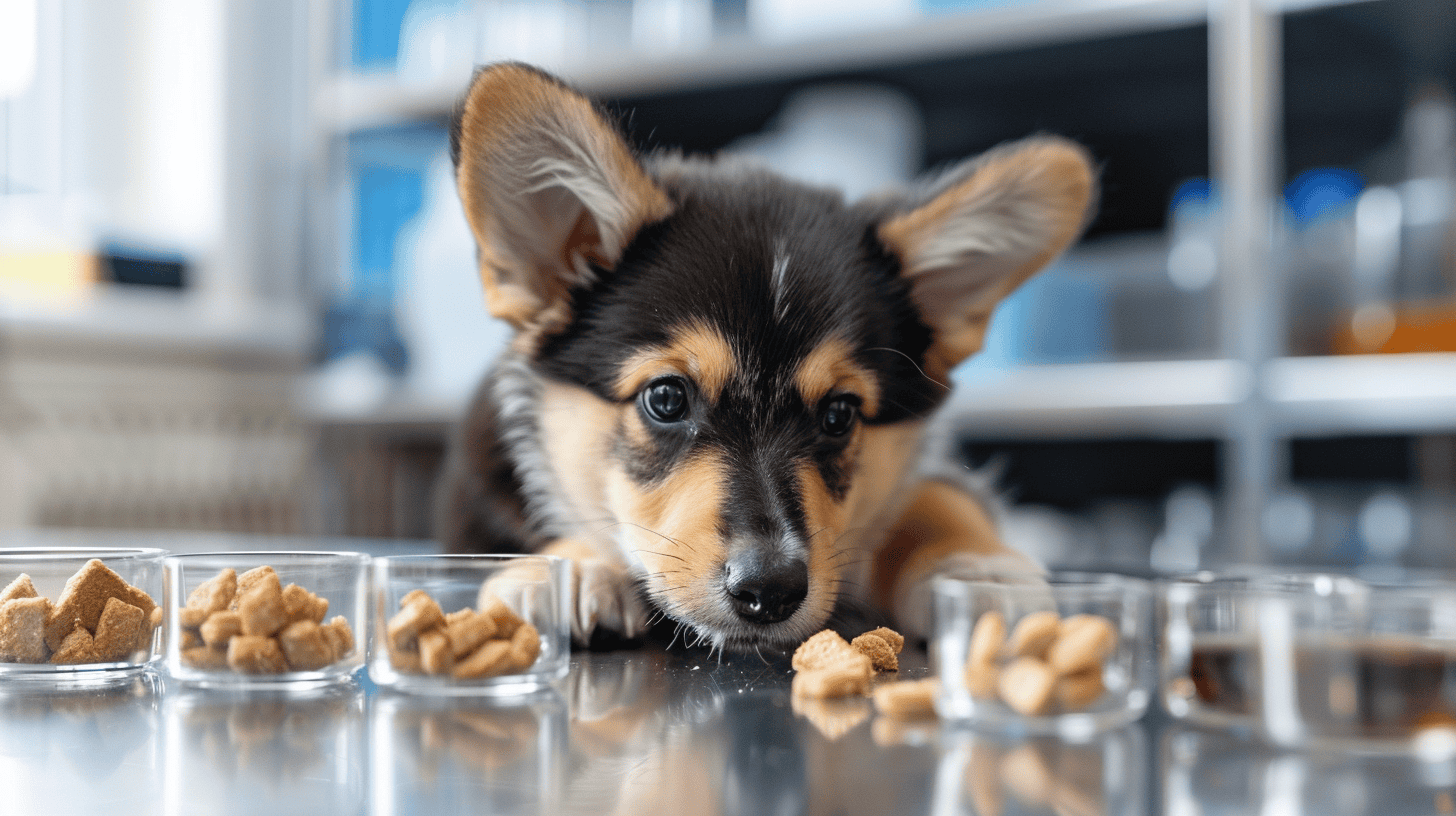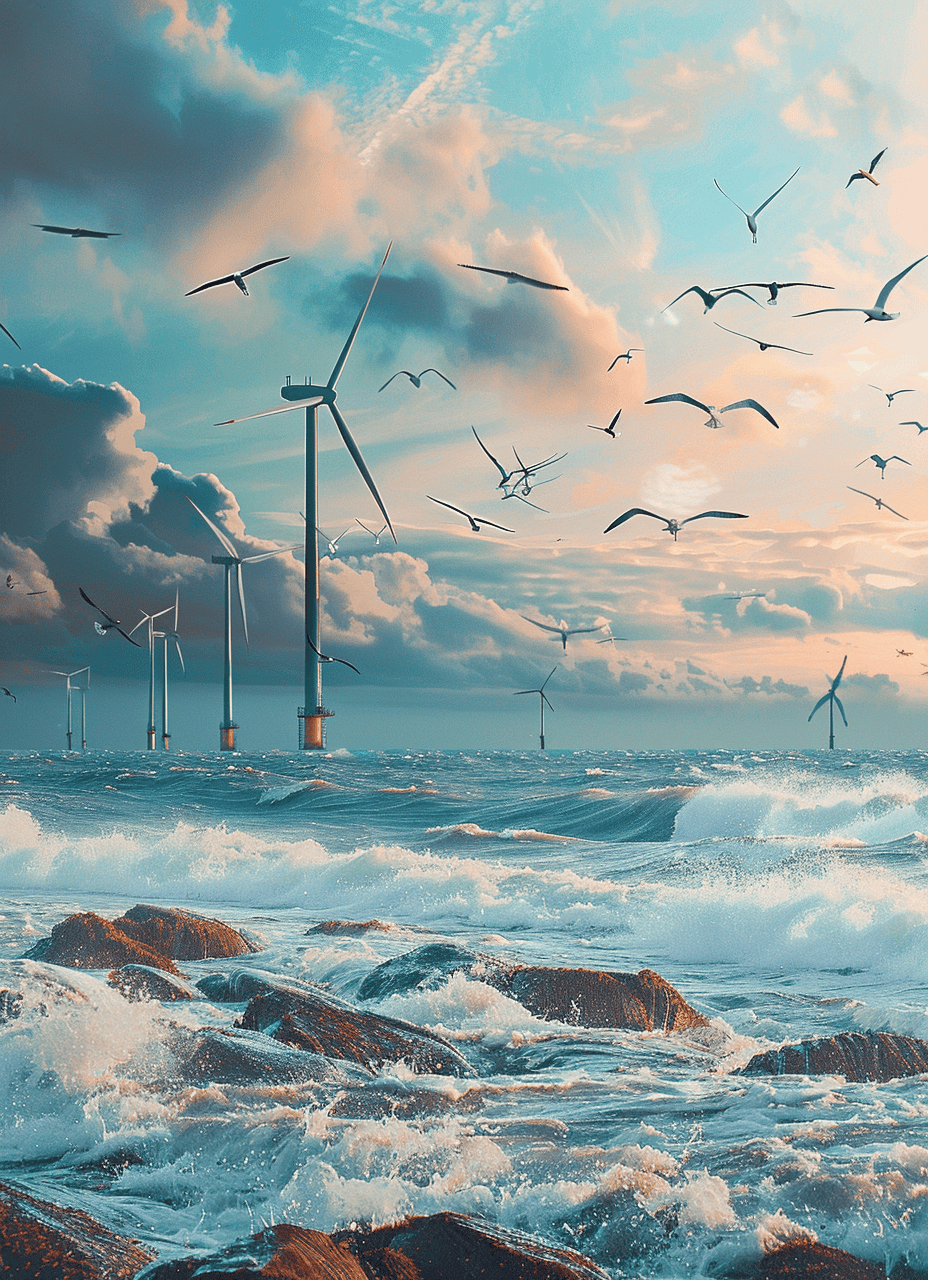
1. SEASOGOOD’s tuna – from the land instead of the sea
While supermarkets are already full of meat substitutes in all flavors, fish substitutes are still on the rise. Front runner is Dutch startup SEASOGOOD. They were the first to get fish-free tuna on Albert Heijn’s shelves.
Co-founder Michael Luesink explains how the soya is made. “We can imitate the tuna structure with soybeans, which under pressure and heat get a fibrous structure that, like tuna, ‘falls apart’ a bit. To imitate the taste of tuna, we take seaweed and algae from the sea. In this way, we add omega-3 fatty acids. Many people think that these nutrients are found naturally in fish, but it is in fish because they eat seaweed and algae. We add the food of the fish so we don’t need the fish.”
“We add the food of the fish so we don’t need the fish.”
Michael Luesink
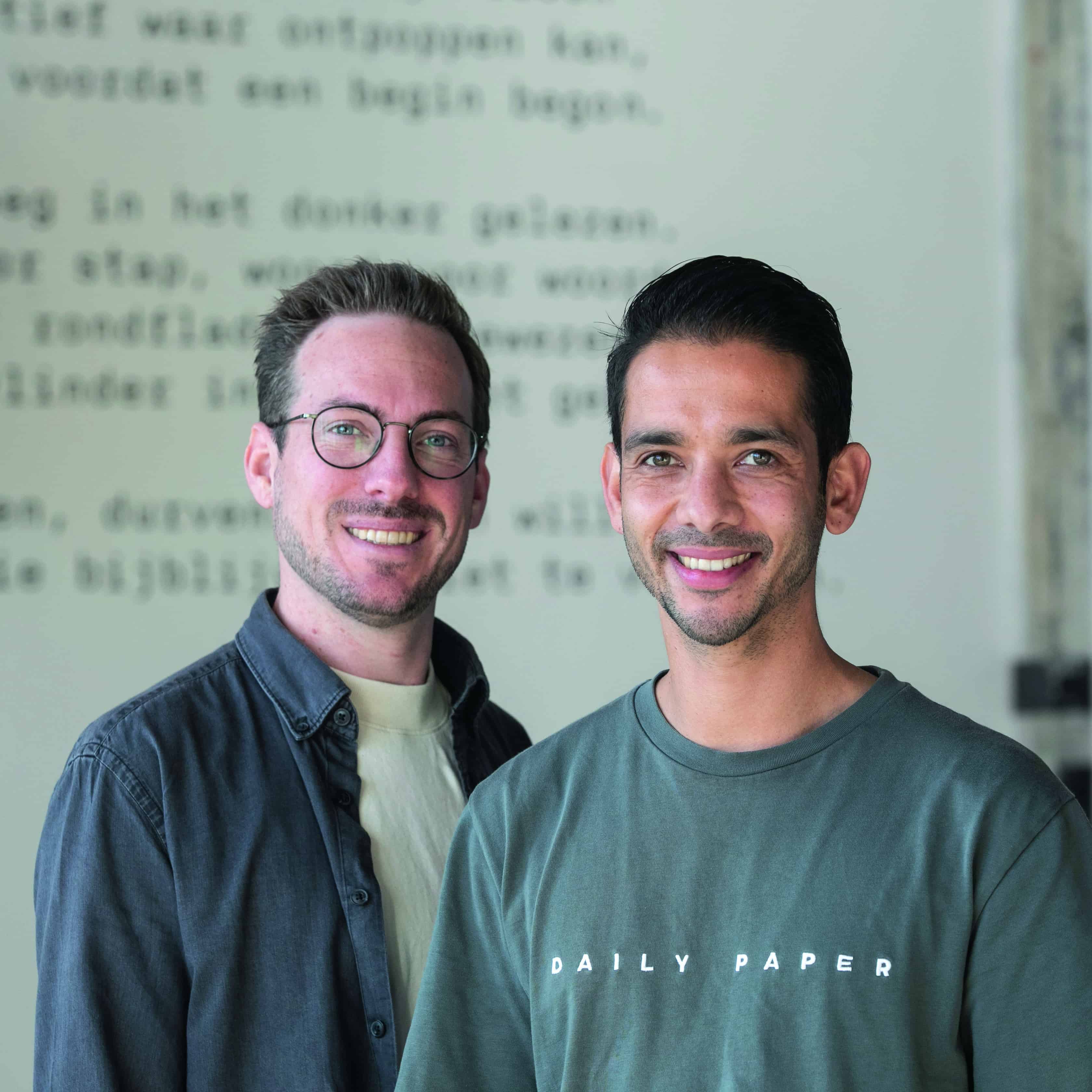
2. RanMarine’s aqua drones
RanMarine, a company based in Rotterdam, has developed innovative drone technology to combat water pollution. Their specialized aqua drones, including the WasteShark and MegaShark, are designed to combat plastic waste and harmful algal blooms in natural swimming waters.
The WasteShark drones, inspired by the wide mouth of a whale shark, have a large storage capacity and can collect up to five hundred kilograms of floating waste daily. These drones are particularly effective in narrow channels and congested areas, such as harbors and marinas, where plastic waste tends to accumulate.
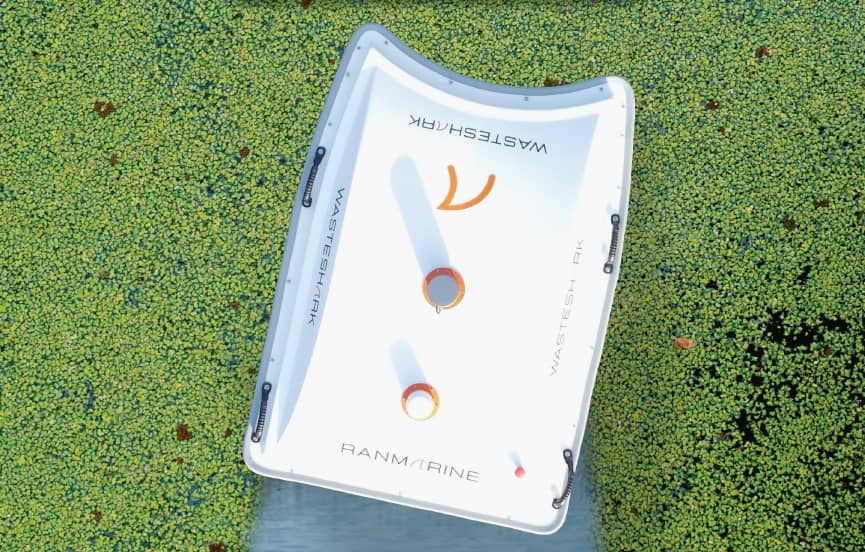
What can we learn from the sea? What role can the ocean play in generating renewable energy? And how can innovations help us take better care of the sea? Find out in our newest edition: IO Next: The Ocean.

3. The Great Bubble Barrier
The amount of plastic that ends up in the ocean each year is equivalent to the weight of 57,000 blue whales. Ninety percent of that plastic waste enters the sea through rivers. Once the waste reaches the sea, it spreads quickly and is difficult to collect. The air bubble screen of Dutch start-up The Great Bubble Barrier, captures plastic before it reaches the ocean. The barrier is composed of a tube with holes that releases air bubbles. The bubble curtain creates an upward current which directs plastic to the surface. By placing the Bubble Barrier diagonally across the river, the natural flow of the water will push the plastic waste to the side and into the catchment system. Operating 24/7, the system does not interfere with fishing and shipping activities.
This innovative solution was first installed long-term in Amsterdam’s Westerdok, in a joint effort with the Amstel, Gooi, and Vecht Water Board and the municipality of Amsterdam. The initiative stemmed from sailors Anne Marieke Eveleens, Saskia Studer, Francis Zoet, and co-founder Philip Ehrhornwho saw the amount of plastic littering Dutch rivers.
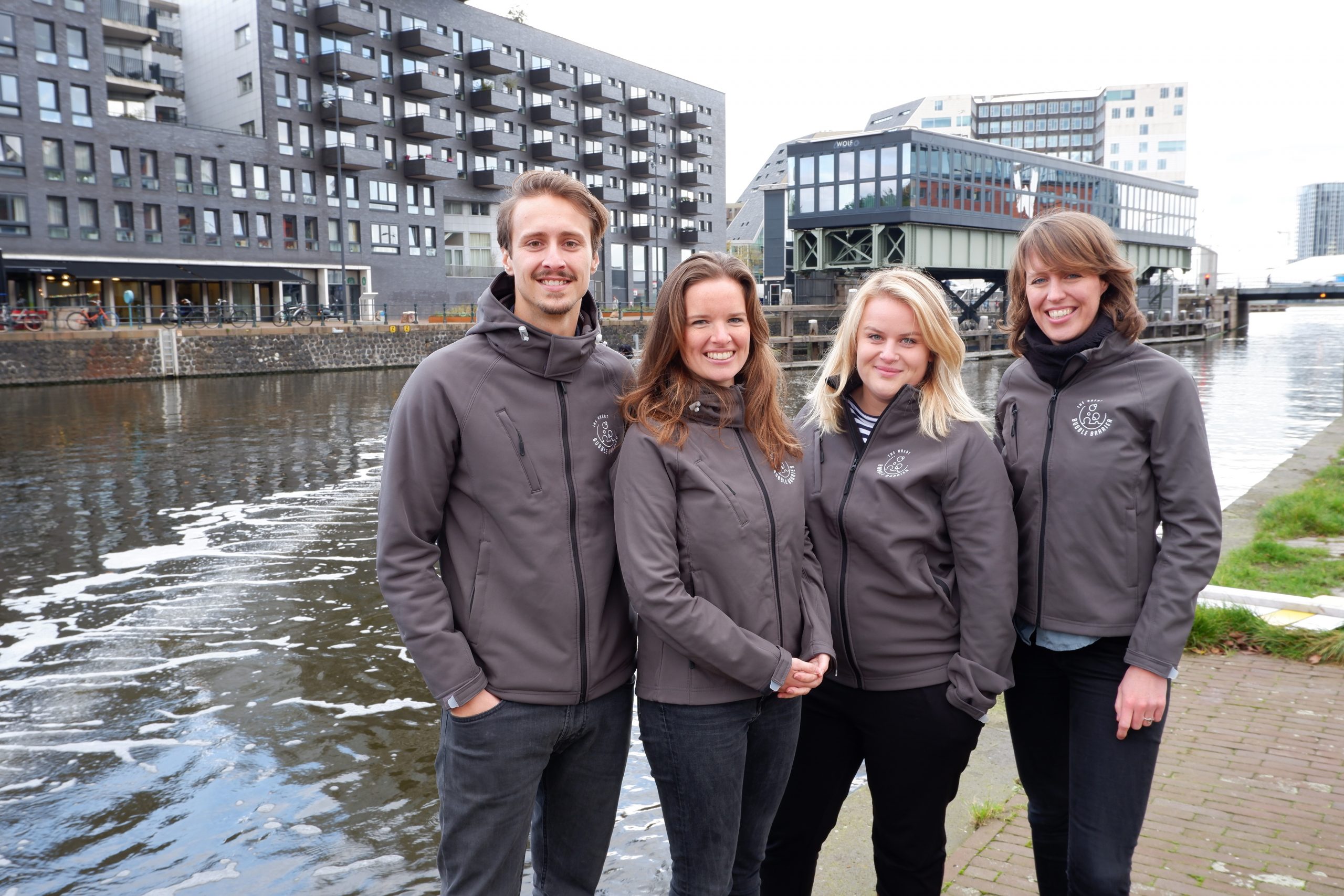
4. This Danish robot stops plastic from flowing in the ocean
Danish start-up All in One Green also captures plastic before it reaches the ocean – but with a robot instead of a bubble curtain. When co-founder Mads Tranders Nielsen visited Melbourne (Australia), he saw huge amounts of garbage floating from a river straight to the sea. “That idea didn’t leave me and once back home I started working with engineers to design a system that does exactly that.” Nielsen founded start-up All In On Green and developed the SeaProtectorOne: a robot that systematically filters river water.
The robot consists of a land-based tower to which a waste trap arm is attached. The waste trap arm is equipped with a conveyor belt and a filter. The arm automatically adjusts to the water level, so that the filter is always in the water to catch all non-natural objects. The robot has integrated sensors through which it automatically empties waste into a container on land. In addition, it is equipped with thermal cameras that detect everything on or in the water: boats, surfers, swimmers. When detected, the robot swings its garbage-catching arm out of the way, to allow free passage.
“That image of tons of plastic entering the ocean didn’t leave me.”
Mads Tranders Nielsen





